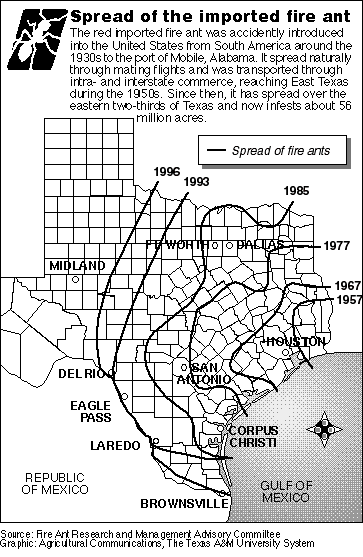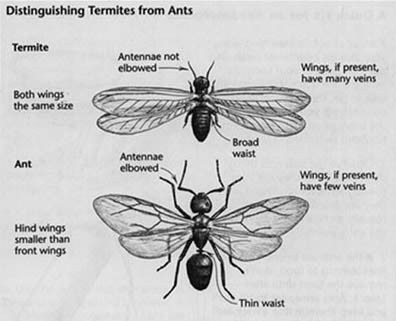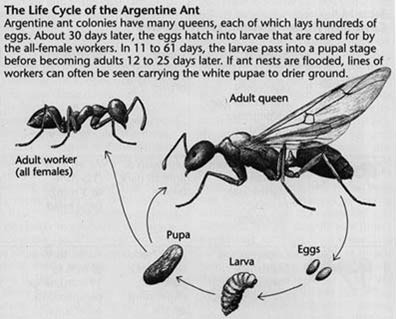Bringing information you can use for action about herbicides, pesticides and other toxic chemicals in northern California and around our shared world
Welcome!
CATs at Work
Our Shared World
Online Store
Programs
Ants
When searching for food, ants are a common invader of the home. Although ant activity is mainly just a nuisance, it is important to be aware of the damage that some ant species are capable of creating, as well as the benefits associated with the presence of certain ant species. Ants kill numerous other pest insects such as subterranean termites; they are likely to kill and eat any insect they find such as flea and fly larvae. Ants also aerate soil, and recycle dead animal and vegetable materials. The approach for eliminating an ant invasion in the home should aim at keeping them out by providing a barrier to the home so that one can reap the benefits of ants outside the home.
If you happen to find a trail of ants marching in your kitchen or swarming an area in the house, try controlling the situation by implementing some of these quick fix methods.
1. Observe the ants and determine where they are going and at what point they entered (such as a crack in the wall).
2. Keep the ants in a line. They are in a line because they are following a chemical trail secreted by the scout ant that found the food. Ants are also easier to kill when in a line.
3. Place a temporary barrier where the ants are entering with petroleum jelly, duct tape, or another sticky substance.
4. Mop up the ants with soapy water.
5. Once you have killed or removed most or all of the ants, permanently block the entry they were using with some form of caulking, or structural barrier.
INDIRECT METHODS
To keep ants away it is important to maintain proper storage of food, and waste management. This entails keeping food in sealed containers, kitchen surfaces clean, and sweeping and vacuuming the floor frequently to eliminate crumbs.
DIRECT CHEMICAL CONTROLS
Two types of least toxic chemicals are well-suited for ant control, boric acid baits and dessicants or sorptive dusts. Boric acid acts as a stomach poison to ants and is best effective when the worker ants bring back the bait to share with the colony. Eventually the entire colony obtains a lethal dose of the poison, however this may take a few days. Dessicants or sorptive dusts act by drying out the insect. Diatomaceous earth and silica gel are two types of dessicants. When the ant comes into contact with the dust, the oily or waxy layer of the ant is destroyed and the insect dies due to dehydration without its protective coating.
MANY TYPES OF ANT SPECIES EXIST
Attemping to control an ant infestation is best effective when the species of ant is known. Some common ant species include the argentine, carpenter, and fire ant.
ARGENTINE ANT
Argentine ants are known to have a variable diet, that includes flea larvae and other juvenile bugs. They are also known for their protection of aphids, and other honeydew producing insects. Aphids are a widely known plant sucking pest. The ants eat the honeydew produced by the aphid, and drive away aphid predators such as the lady beetle. It has been shown that if the Argentine ant is allowed to forage among many ornamentals and on certain tree crops, natural enemies of the plants such as aphids, scales, mealybugs, whiteflies, etc. increase to damaging populations. These ants can also be damaging to Bee hives.
FIRE ANT
Two species of fire ant were accidentally introduced to the United States in the early 1900's. The black imported fire ant (Solenopsis richteri) from Argentina or Uruguay and the red imported fire ant (Solenopsis invicta) believed to be from Brazil. Fire ant damage can be in the form of agricultural problems, ecological effects, home invasion, and physical pain.
Fire ants commonly infest home and ornamental lawns or turf areas. Their mounds also decrease the aesthetic value of property. Like many other ants, fire ants invade homes and structures in search of food. Sometimes they also invade electrical and utility housing and can cause damage by chewing on insulation creating shorts and blocking switch mechanisms. Fire ants are aggressive when disturbed and have the ability to bite and sting multiple times. Symptoms of a fire ant sting include burning and itching due to the injection of an oily alkaloid, Solenopsin A. Stings are not usually life threatening but can result in scars. Fire ants sometimes attack chicken and livestock, and can overwhelm an area by eliminating competing insects. Efforts to eradicate fire ants in the 1960's were unsuccessful. Fire ants have a high reproductive rate, and colonies can disperse quickly. Pesticide use is ineffective when the worker ants are killed before the poison is passed to the queen and other ants in the colony.
Natural enemies of the Red Imported Fire Ant include bacteria, several species of parasitic fungi, and arthropods predators such as the straw-itch mite, and the phorid fly.

CARPENTER ANT
Most ant species that invade the home act mainly as a nuisance as they march through the home foraging for food. Carpenter ants, however, have destructive capabilities. Carpenter ants do not eat wood, but burrow into wood and hollow out beams eventually causing them to weaken . They prefer decayed or rotted wood for excavation, but may eventually tunnel into structurally sound wood. Carpenter ants can be identified more easily than many other ant species due to their larger size and smooth back rather than a notched back found on most ants. This attribute can be identified under a magnifying glass.
Carpenter ants primarily eat dead insects, sweet honeydew secreted by aphids, plant juices, and crumbs from sweet or fatty foods. Ants go without food for six months during the winter.
What to do if carpenter ants pose a problem:
1. Locate the main colony (75% of carpenter ant nests are located on the outside of the structure).
2. Provide physical controls such as blocking or caulking access points and replacing damaged wood. Many ants can be captured using a good shop vacuum.
3. Make use of least-toxic chemical control (advised as a last resort): mentioned above.
PYRETHRUM INSECTICIDES
Pyrethrum based products are commonly discussed and used as an alternate control method to conventional insecticides. Pyrethrum originates naturally from a variety of chrysanthemum. Although pyrethrum is a naturally derived insecticide, its use should be cautioned. Pyrethrum is highly toxic to insects and moderately toxic to mammals. Synthetic versions of naturally occurring pyrethrins are pyrethroids. Pyrethrins are highly photosensitive, breaking down quickly in sunlight, synthetic versions were developed to increase photo stability. Permethrin is one of the synthetic versions of pyrethrins available.


REFERENCES
Daar, S., Olkowskie, W., Olkwoski, H. Common-Sense Pest Control 1991. Taunton Press.
Dickey, P. Protecting Your Home from Carpenter Ants. Washington Toxics Coalition. 1998.
Texas A&M Univ., Dept. of Entomology. Fire Ants. http://fireant.tamu.edu/antfacts/History.htm.





